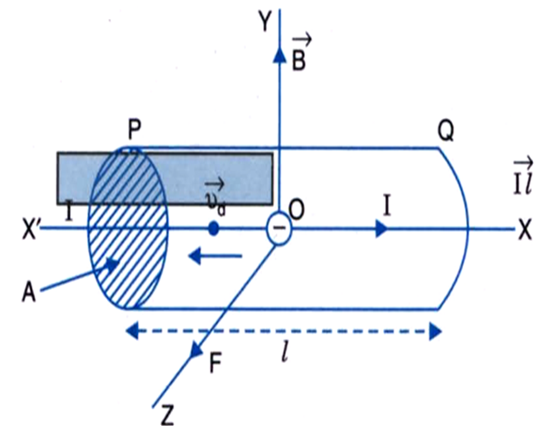

If n is the number of free electrons per unit volume of the conductor, then total number of free electrons in the conductor will be
N = n (AI) = nAl
Total force on the conductor is![]()
But the current through a conductor is related with drift velocity be the relation.
![]()
![]() Il = n A e vdl
Il = n A e vdl
We represent I![]() as current element vector. It acts in the direction of flow of current i.e., along OX. Then have I
as current element vector. It acts in the direction of flow of current i.e., along OX. Then have I![]() and
and ![]() opposite directions. So
opposite directions. So![]() ...(ii)
...(ii)
From (i) and (ii), we have![]()
Magnitude of
F = Il B sin θ
When ![]() = IlB.
= IlB.
Fleming’s left hand rule: This rule gives the direction of force on current carring conductor placed in magnetic field perpendicularly. If we stretch the fore finger, central finger and the thumb of our left hand mutually perpendicular to each other such that the fore finger points in the direction of magnetic field, central finger in the direction of current, then the thumb gives the direction of force experienced by the conductor.
